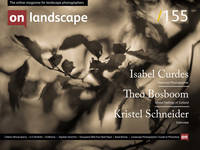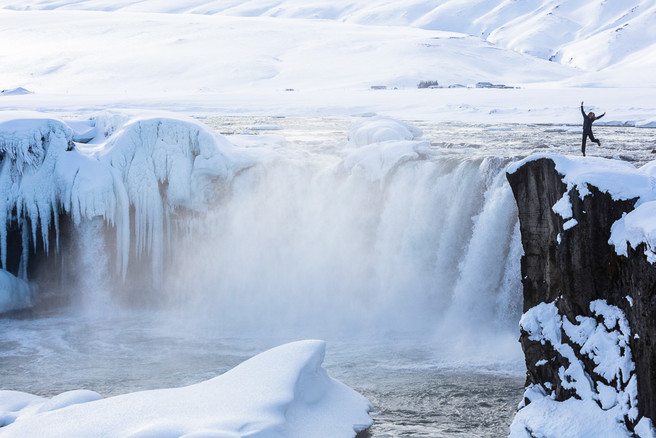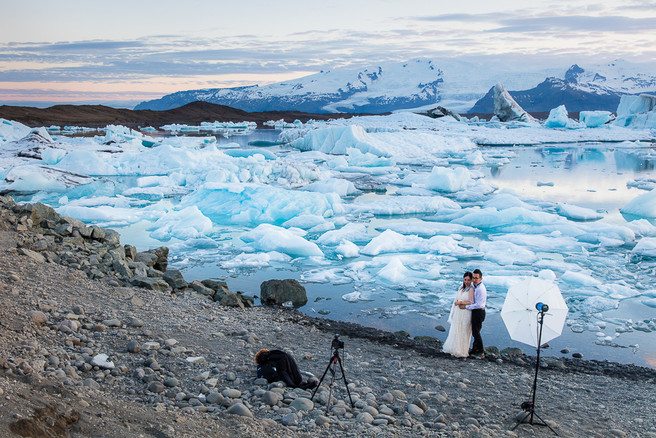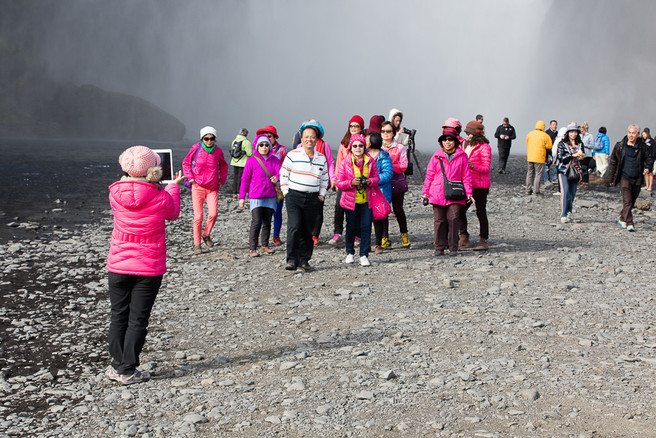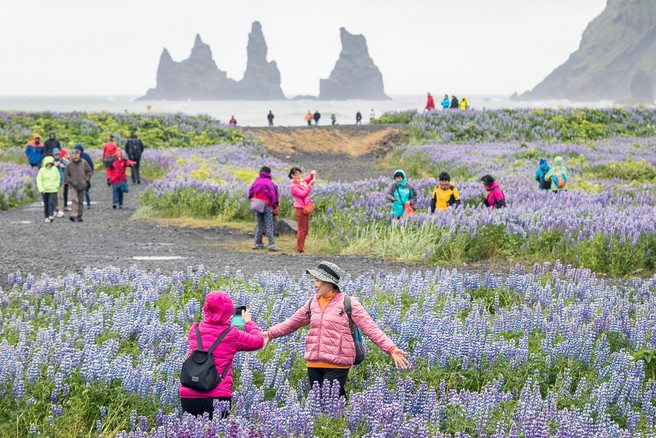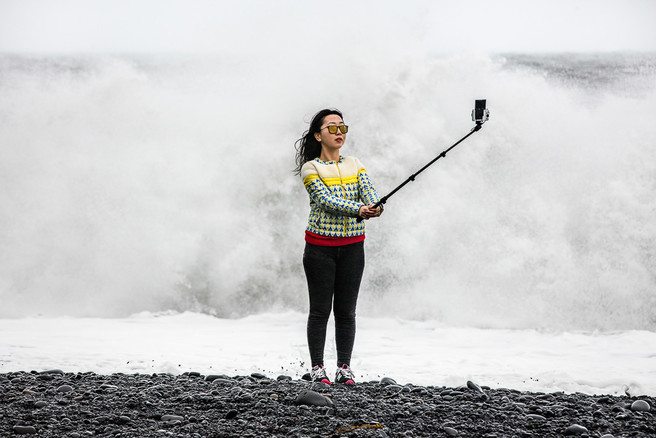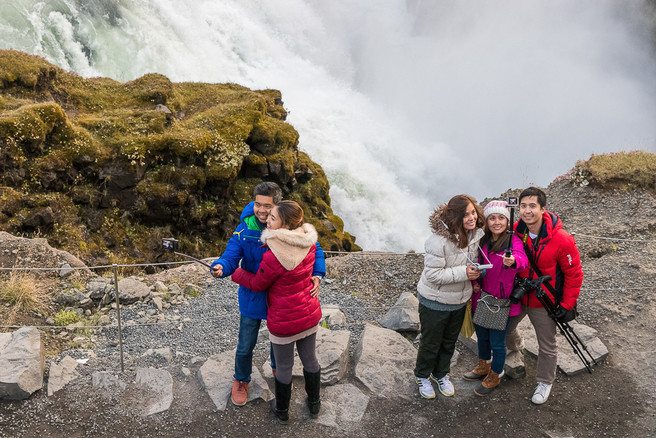Mixed Feelings of Iceland

Theo Bosboom
Theo Bosboom is a passionate photographer from the Netherlands, specialising in nature and landscapes. In 2013, he turned his back on a successful legal career to pursue his dream of being a fulltime professional photographer. He is regarded as a creative photographer with a strong eye for detail and composition and always trying to find fresh perspectives.
On my first winter trip to Southeast Iceland in February 2007, it was hard to find hotels and restaurants that were open. The whole country seemed to be in a state of hibernation and there were hardly any other tourists or photographers around. We were the only guests in Hali Guesthouse close to the famous glacier lagoon and we had the black lava beach with the iceblocks in the surf all to ourselves, day after day.
For my last winter trip to Southeast Iceland two years ago, we had to book accommodation one year in advance otherwise we would have been too late. At some of the famous waterfalls there were hundreds of tourists, brought there in big tour buses. The lava beach was packed with photographers and tourists and during our ice cave tour, guides were shouting to each other, it was almost impossible to get decent shots without other people in them and the experience was quite different than in previous years, to put it mildly.
With this article and the pictures that go along with it, I want to show how Iceland has changed into a destination for mass tourism and how people are experiencing nature in the days of selfie sticks, social media and cheap flights. Besides that I want to take a critical look at my own role as landscape photographer that has promoted Iceland intensively through his images and by leading photo tours.
Photographers paradise
The number of photographers that are visiting Iceland has exploded over the last 5 years. With good reason, because Iceland obviously has a lot to offer. In the foreword of my book Iceland pure I described it as follows:
“It has the biggest ice cap in Europe; the most beautiful and powerful waterfalls; the largest number of active volcanoes. It has puffins and harlequin ducks, wild, rocky coasts and black lava beaches, deserted plateaus and bizarre geothermal phenomena. (…) And yet this impressive roll call is only part of the reason for my continuing passion for Iceland. More important is that when I am there I feel closer to nature than I do anywhere else. It is as if I experience nature more intensely here. Iceland gets under my skin, moves me, and overwhelms me. Time and time again.”
I am sure I am not the only one who feels this way, because I know many photographers that have been to Iceland multiple times.
Inevitably, this resulted in a large flow of Iceland images on the web, in magazines and in books. Often you see similar images of well-known places. But Iceland is big and varied enough and it attracts so many good photographers that even nowadays you can see stunning new work from Iceland every now and then.
The growth of tourism
After the photographers, the ‘normal’ tourists also have discovered Iceland, probably attracted by the constant flow of beautiful images. Iceland has faced an explosive growth in the number of tourists in the last years. According to the Icelandic Tourist Board, the average yearly growth rate since 2010 has been around 25%. In 2017 the island has been visited by more than 2 million people, on a population of only 335.000 people.
When in 2010 the Eyjafjallajokull volcano erupted and severely disrupted the European air traffic for weeks, people on Iceland feared that it would negative effects on tourism. This proved to be wrong. Nowadays it is believed that the eruption has helped to put Iceland on the map. And the growing numbers of tourists surely helped to get Iceland out of the deep financial crisis that hit the country in 2008 when its 3 major banks collapsed. The booming tourist industry creates lots of new jobs and brings in a lot of money.
But the growth brings some major challenges for Iceland with respect to logistics, safety and the environment. Wild camping in vulnerable landscapes, widespread public pooping because of a lack of toilet facilities, illegal off-road driving and throwing coins into hot springs and natural pools are just a few of the problems reported.
Furthermore, many tourists seem to underestimate the power of nature on Iceland. Several people have drowned on the infamous black beaches near Vik in recent years, where the waves can be very treacherous and the current is incredibly strong. I have witnessed many ‘almost accidents’ myself too, often caused by the irresponsible or ignorant behaviour of tourists. The rescue services of Iceland have to execute costly rescue operations regularly saving people in the interior that went for a hike or snowmobile tour and got into trouble.
Headache
The arrival of mass tourism on Iceland has also changed the way the island and its spectacular nature are being photographed. Where previously it was the spectacular nature itself that was photographed by seasoned nature lovers and serious landscape photographers, nowadays the natural wonders of Iceland above all seem to form a nice background for selfies and pictures that tourists take of each other. The people in the pictures often seem to pay more attention to themselves than to the overwhelming beauty of nature around them.
After having witnessed the new developments for several years, I decided to plan a trip to Iceland just to photograph the tourist's behaviour. This project was way out of my comfort zone. Instead of avoiding other photographers and people – what I normally do – I went to the most crowded places on Iceland. And instead of trying to leave the people out of my frames – my normal behaviour – I had to photograph them. This was a real challenge because I wanted to do it without getting noticed, not wanting people to pose for me or to invoke unnatural behaviour. So I usually used my 70-200 mm from a little distance, pretending I was taking pictures of the waterfall, hot spring or whatever was in the background.
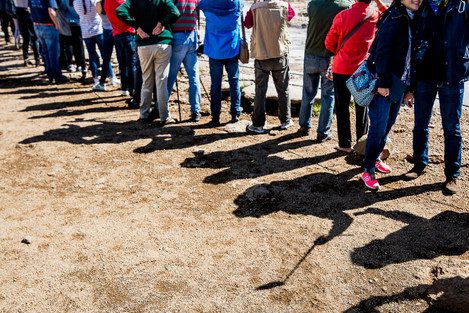
The first days of the trip were horrible. I felt very unhappy and every night I returned to my hotel with a bad headache. But after a while I started to get a kind of rhythm and I had the feeling my pictures were getting better. Although the things I witnessed usually made me sad or worried, I also saw many funny things and I noticed that the people I was photographing usually were enjoying themselves thoroughly. So it was sometimes hard not to feel at least a bit of sympathy form my subjects.
What struck me most was the very limited time spent at the sites by many people. People visiting Iceland often have made long flights to get to the island and often drive many hours a day in a rental car or bus to see the highlights. All this stands in stark contrast to the time actually spent at the waterfall, geothermal source or other highlights. This is sometimes only a few minutes and rarely longer than an hour. Moreover, that limited time on the spot is usually largely spent on making selfies, pictures of travelling companions and pictures of the spot itself. Spectacular photos made on an exotic destination are doing well on social media. When the pictures have been made, people quickly lose their interest and move on to the next spot.

